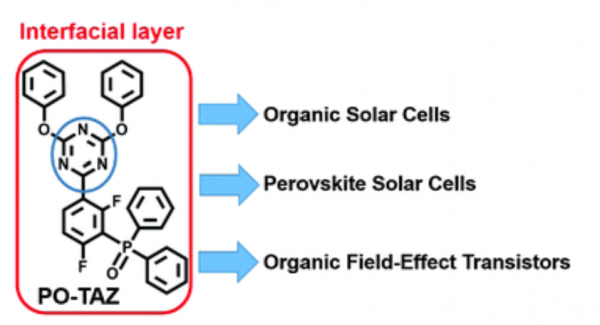A simple structured and efficient triazine-based molecule as an interfacial layer for high performance organic electronics
- 저자
- Nallan Chakravarthi, Kumarasamy Gunasekar, Woosum Cho, Dang Xuan Long, Yun-Hi Kim, Chang Eun Song, Jong-Cheol Lee, Antonio Facchetti, Myungkwan Song*, Yong-Young Noh*, Sung-Ho Jin*
- 저널명
- Energy & Environmental Science, 9, 2595-2602 (2016)
- 년도
- 2016
- Link
- http://dx.doi.org/10.1039/C6EE00292G 280회 연결
[Abstract]
Achieving the state-of-the-art performance of solution processable and flexible organic electronics requires efficient, stable, and cost-effective interfacial layers (ILs). Here, we report an alcohol soluble phosphine oxide functionalized 1,3,5-triazine derivative (PO-TAZ) as an IL, which remarkably tailors the work function of conductors including metals, transparent metal oxides and organic materials, making it an ideal candidate for an interfacial material in organic electronics. Consequently, PO-TAZ thin films enable the fabrication of organic and organic–inorganic (perovskite) solar cells with power conversion efficiencies of 10.04% and 16.41%, respectively, and n-channel organic field-effect transistors with an electron mobility of 8 cm2 V−1 s−1. Owing to the low-cost processing associated with PO-TAZ and the tremendous improvement in device performances as compared to the devices without PO-TAZ along with ambient stability, PO-TAZ is a good choice for efficient organic electronics in large area printing processes.
- 이전글Improved electron transport properties of n-type naphthalenediimide polymers through refined molecular ordering and orientation induced by processing solvents 24.12.16
- 다음글Synthesis of Fullerene Derivatives for the Application to Organic Photovoltaic Cell and n-Channel Organic Thin-Film Transistors 24.12.16
